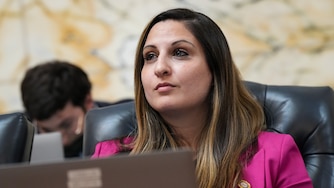Think about it like home remodeling: If the Maryland Transit Administration is a $14 billion house, then it needs about $2.8 billion — roughly a fifth of its value — of rehabbing.
That’s according to a report released this month by the MTA called the Capital Needs Inventory, which provides an overview of agency assets that are falling out of “state of good repair,” an industry phrase used to describe a bus, railroad bridge or any other transportation resource when it safely works the way it’s intended to.
Not being in a state of good repair doesn’t necessarily mean that a train or bus is unsafe to use, rather that some core component is faulty and needs replacing. Having a backlog of such projects is normal for a transportation system.
To explain using our analogy: The house is livable, but maybe the dining room windows are drafty or the air conditioning is on the fritz. There are a variety of projects needed to make living in the house better that vary in severity and price.
But ignore them for long enough, and things get more serious.
If Baltimore’s bus system is the floor, then about 17% of it is chipped and creaking. If the Light Rail is a set of 52 stairs (one for each train car), roughly every third step has caved in — you can still get up to your bedroom, just maybe not as efficiently. And if many more break (like they did a couple of Decembers ago), you’ll need to sleep on the couch downstairs.
The cost to fix it all has gone way up as inflation is compounding on a decades-long pattern of deferring big-ticket maintenance projects for the MTA’s pricier systems.
The report is not all doom and gloom — it says the state transportation department has money allocated for 90% of such rehab projects necessary through the next five years (the capital budget is created in six-year increments). Transportation advocates hailed Moore and state lawmakers’ work in Annapolis earlier this year to raise new revenues and fund rehab projects, such as a modernization of the Baltimore Light Rail, calling it a welcome change after decades of deferred maintenance.
But the $2.8 billion backlog has grown by roughly $1 billion over the past three years. Tack on new projects the agency has committed to, like the Purple Line light rail in the Maryland suburbs of Washington, D.C., and the MTA will need just short of $1 billion in annual capital spending over the next decade to keep all the parts of the system moving — a figure that doesn’t include major proposals to expand service in Baltimore.
The increase of transit assets falling into the rehab backlog mirrors a trend among other transit agencies nationwide. A Federal Transit Administration report from earlier this year estimated that the national rehabilitation backlog was at roughly $140 billion, about 10% of transit asset value nationwide, as of 2022.
But that year, the MTA’s backlog was at $1.8 billion, or about 14% of its asset value, putting the agency on the wrong side of the average. Now it’s grown to $2.8 billion, or 20% of asset value. Agency officials anticipate the backlog will shrink about 45% over the next five years to $1.5 billion, which is the same dollar value as the MTA’s 2019 backlog.
The Baltimore Light Rail is a big focus in this report — specifically, the full funding for replacing the vehicles and modernizing the rail line’s stations and systems. The entire project will take longer than the six years currently budgeted, but it is estimated to cost just shy of $1.4 billion.
Similar things are happening on Baltimore’s Metro subway line, which, if we go back to the house metaphor for a moment, is that partially-finished basement with the old entertainment center that the kids don’t like watching movies on because the colors on the T.V. screen look funky and the sound is bad.
The subway needs about $2.1 billion over the next 10 years, according to the report. New railcars and a modern train control system for the Metro are slated to phase into service starting this year, meaning the line should be considered in a state of good repair by 2027, reducing the rehab backlog by about $400 million.
But as the agency chips away at all those repairs, it’s putting additions onto the house.
The MTA will start owing $190 million in annual “availability payments” for the Purple Line, currently under construction in Montgomery and Prince George’s counties, in 2027, when it is slated to start operating. The agency also has committed about $533 million to projects that will benefit the MARC commuter train system, including chipping in on Amtrak’s future West Baltimore tunnel and adding a fourth track at the BWI rail station.
The report does not factor in any of its major Baltimore-area expansion plans or proposals, which beyond just the capital to build them also would require money for future rehabilitation and maintenance.
So if the MTA is going to make any additions to the house for Baltimore, like the east-west Red Line or a fifth bus division to help deliver more frequent bus service, it will have to do a serious shaking out of the couch cushions or find another way to fund them.





Comments
Welcome to The Banner's subscriber-only commenting community. Please review our community guidelines.